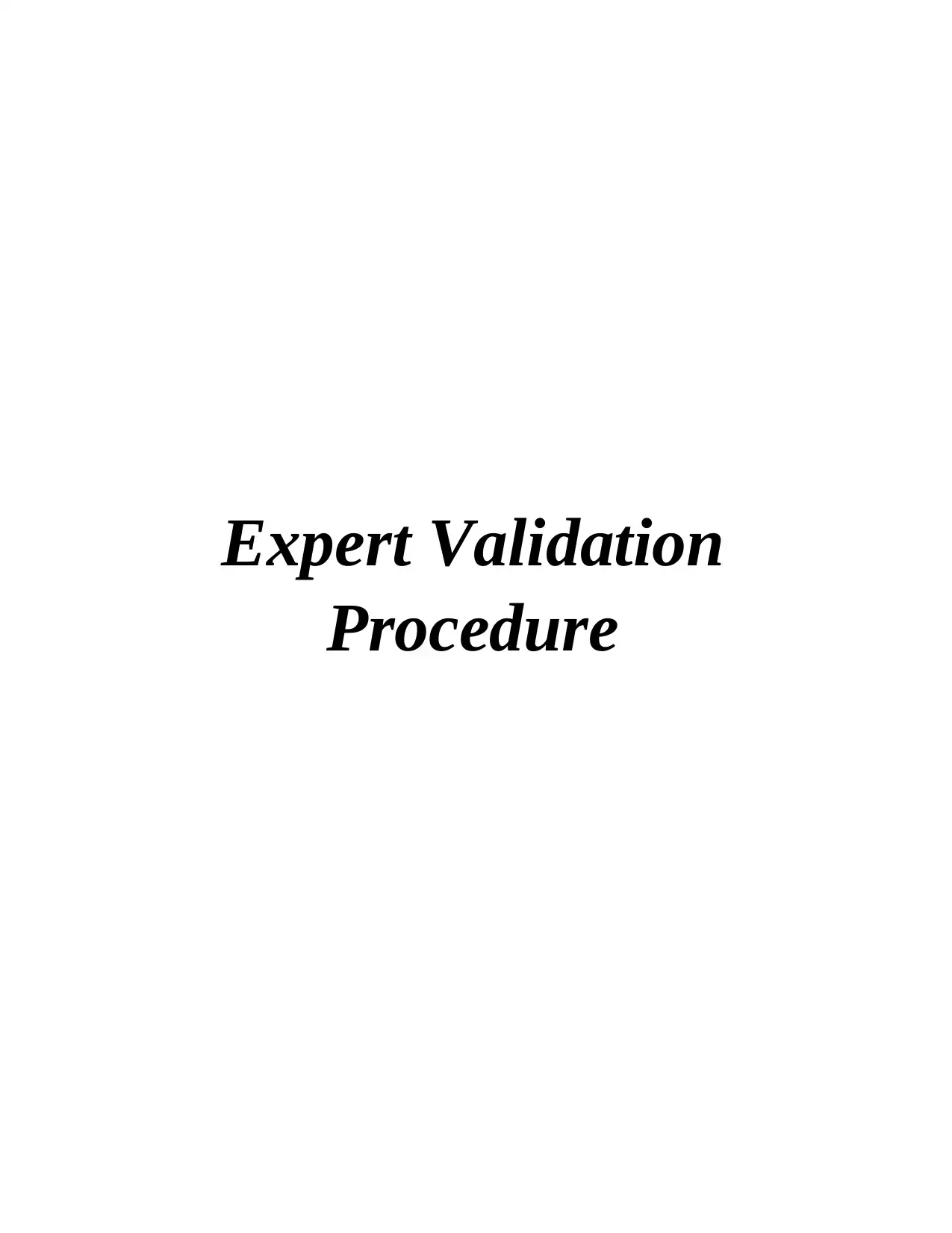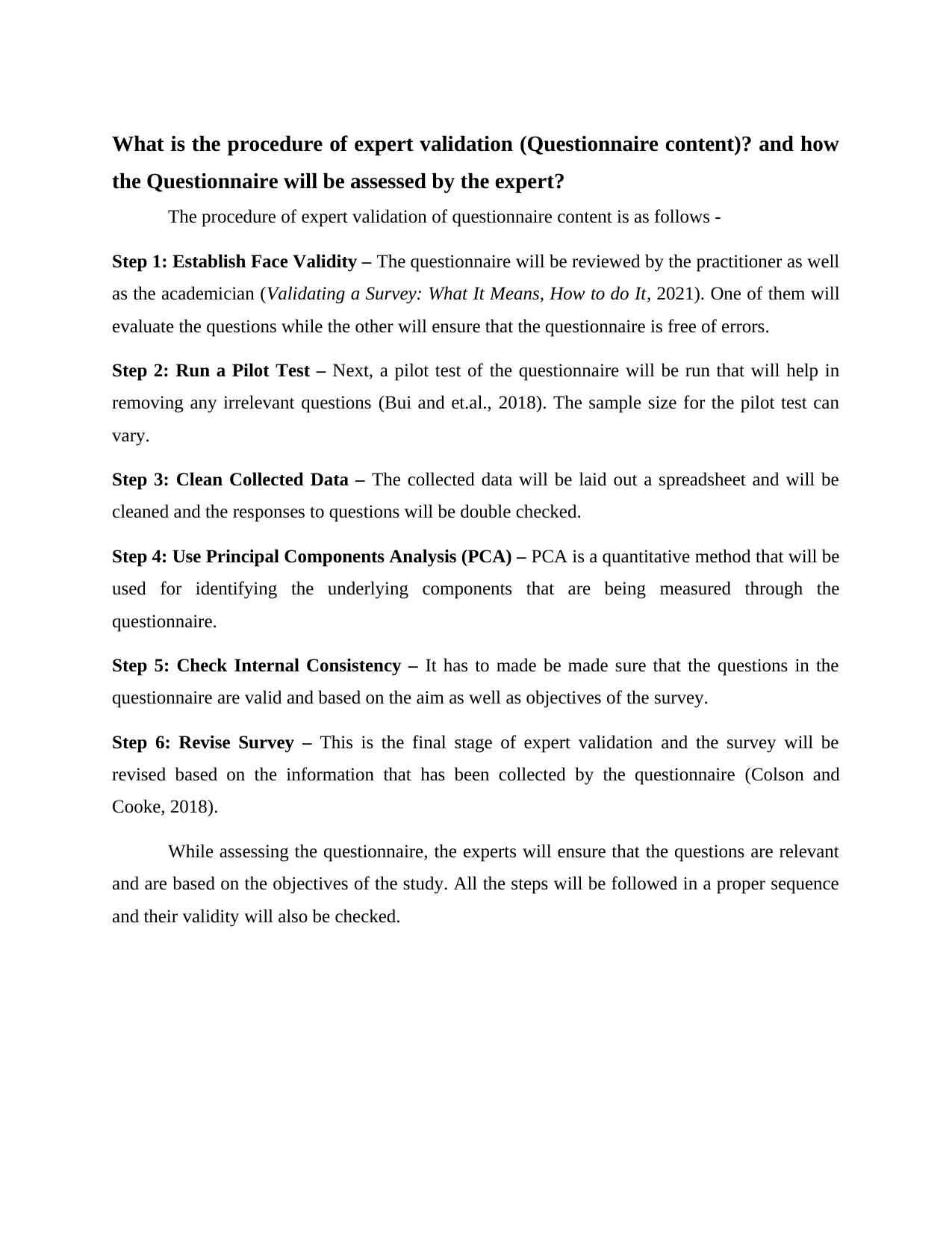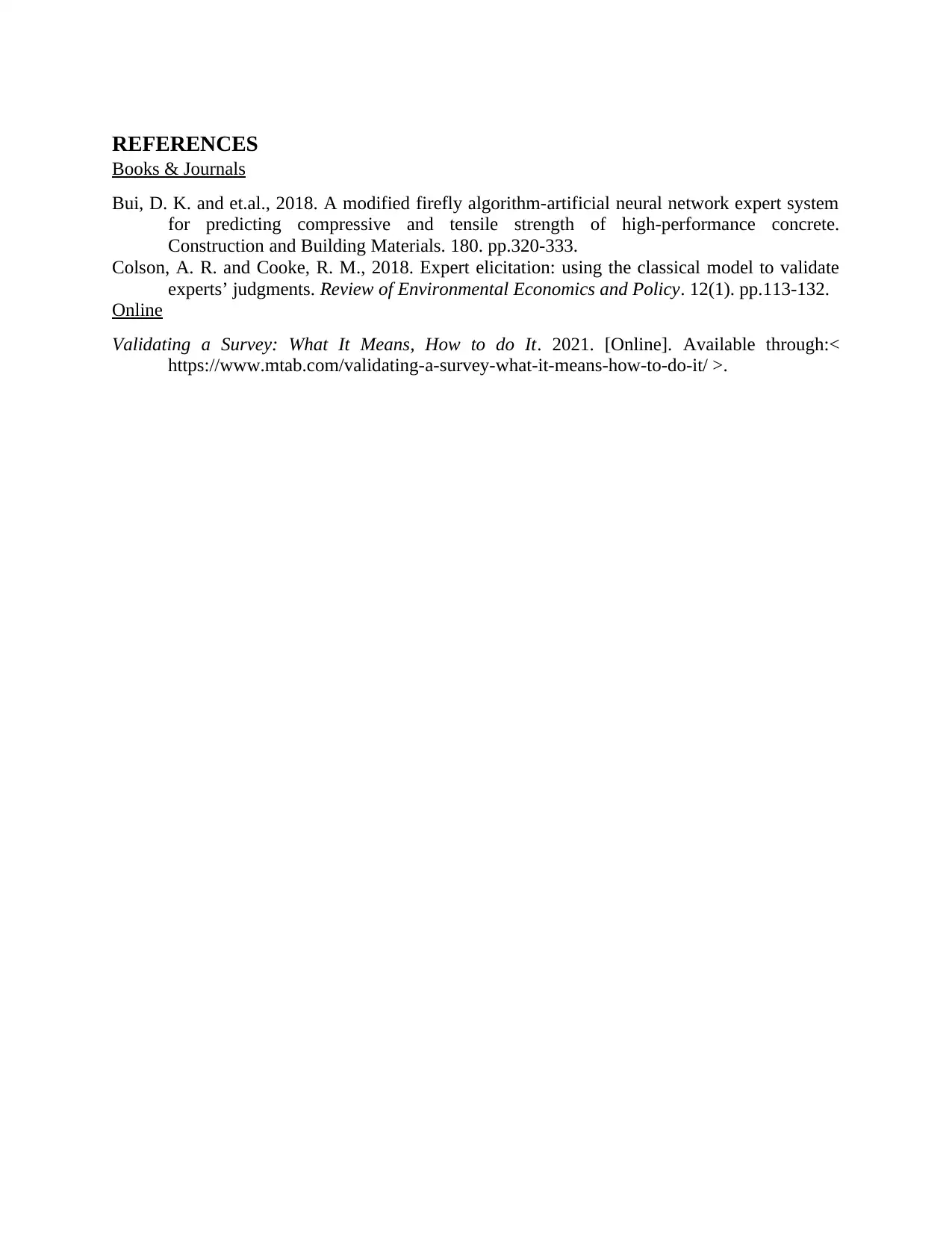PhD Questionnaire: Expert Validation Procedure in the Management Field
VerifiedAdded on 2022/12/28
|4
|454
|63
Homework Assignment
AI Summary
This assignment details the expert validation procedure for questionnaire content, specifically within the management field. It outlines a step-by-step process that includes establishing face validity, running pilot tests, cleaning data, using Principal Components Analysis (PCA), checking internal consistency, and revising the survey. The role of experts, both academicians and practitioners, is emphasized in assessing the relevance of questions and ensuring alignment with the study's objectives. References to relevant literature are provided to support the methodology. The validation process aims to ensure the reliability and validity of the questionnaire, crucial for quantitative research in the management field.
1 out of 4






![[object Object]](/_next/static/media/star-bottom.7253800d.svg)